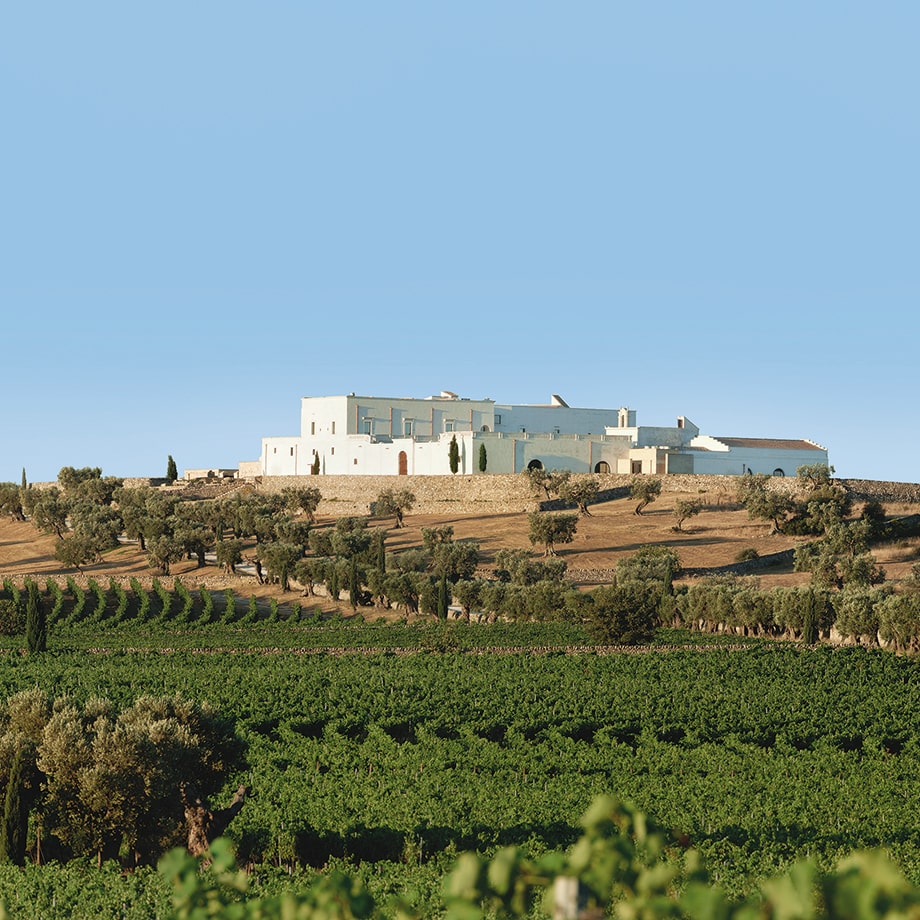An enchanted place located 210 above sea level
Upon their arrival in Amastuola, customers are welcomed by the long alley flanked by centuries-old olive trees in the fantastic scenery offered by the Farm. The olive trees, next to one another lined in a row, create a sort of silver-coloured guiding line, which seems to be gradually composed and decomposed at the mercy of the blowing wind.
All around, the grassland changes in colour according to the seasons and is intertwined with the sharp-edged outline of the typical dry stone walls. Climbing up towards the farm, the full view of the wavy vineyard opens up little by little. This forms light and shade effects with the olive trees and, at times, takes on the appearance of combed velvet shattering as the wind passes.
The landscape signed Fernando Caruncho
The Amastuola vineyard-garden brings together the two concepts of functionality and aesthetics. The rows of vines were planted on the basis of the design conceived by the great landscape designer Fernando Caruncho. The vine spaliers draw harmonious parallel waves that follow each other for about 3 km. The were also defined by their author himself “waves of time that have been crossing this place since times immemorial”.
In addition, 1,500 centuries-old olive trees have been rearranged in the 24 islands organically positioned throughout the entire surface of the vineyard as well as along the historic allays of the Farm. The olive trees used are the result of a historical-monumental recovery work. The CNR (National Research Council) of Perugia dated and filed a record of all the olive trees, some of which are 800 years old and have a diameter that exceeds 2.5 metres. The combination of olive trees and vines has created a harmonious visual contrast that brings alongside the silver green of the vines with the intense green of the olive trees.
Amastuola: the farm set in the heart of the Terra delle Gravine Regional Park
La Masseria Amastuola is set amid the greenery of the “Terra delle Gravine” Regional Park as well in the heart of the so-called “100 Farms Area” of Crispiano. It is located to the south of the places where the precious “Ori di Taranto” (“Taranto Gold Jewellery”) were found and a few hundred metres from the necropolis of Accetta, with its famous Palaeolithic dolmens. To the east, it borders the spectacular natural site of the Gravina del Triglie. The surrounding rocky area is rich in luxuriant typical local vegetation, characterised by an alternation of maritime pines and typical plants such as rosemary, thyme, lentisk, strawberry tree, blackberry, wild rose, wild strawberry, hawthorn and almond-leaved pear tree.
